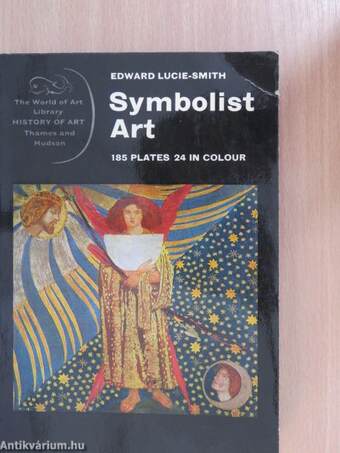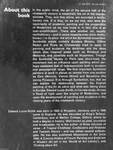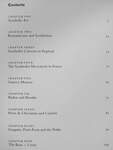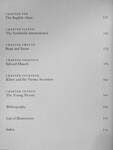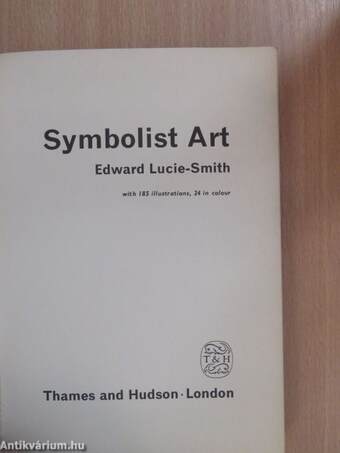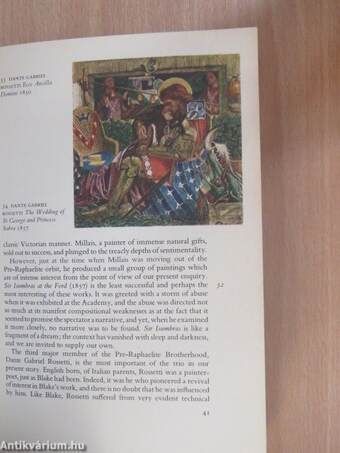1.068.961
kiadvánnyal nyújtjuk Magyarország legnagyobb antikvár könyv-kínálatát

VISSZA
A TETEJÉRE
JAVASLATOKÉszre-
vételek
Symbolist Art
with 185 illustrationen, 24 in colour
| Kiadó: | Thames and Hudson |
|---|---|
| Kiadás helye: | London |
| Kiadás éve: | |
| Kötés típusa: | Ragasztott papírkötés |
| Oldalszám: | 216 oldal |
| Sorozatcím: | The World of Art Library-History of Art |
| Kötetszám: | |
| Nyelv: | Angol |
| Méret: | 21 cm x 15 cm |
| ISBN: | 0-500-20125-0 |
| Megjegyzés: | Fekete-fehér és színes fotókkal, reprodukciókkal. További grafikus a kötetben. |
naponta értesítjük a beérkező friss
kiadványokról
naponta értesítjük a beérkező friss
kiadványokról
Fülszöveg
L150 NET IN UK ONLY
Abolit this ,n the Pub,ic min<J, the art of the second half of the
hnnlf nineteenth century is essentially the art of the Impres-
sionists. They, and they alone, are accorded a revolu-
tionary role. It is they, so we are told, who were the
opponents of academic painting and the progenitors
of Modernism as we now know it. In fact, this is an
over-simplification. There was another art, equally
revolutionary - and in some respects even more revolu-
tionary - in its aims: the art of the Symbolist movement.
Symbolist artists (notably Gustave Moreau, Odilon
Redon and Puvis de Chavannes) tried to apply to
painting and sculpture the doctrines and the ideas
which also inspired poets such as Rimbaud and
Mallarmé, and novelists such as Huysmans. Though
the Symbolist heyday in Paris was short-lived, the
movement had an influence upon painting which per-
haps exceeded that of Impressionism both in duration
and geographical range. We find important... Tovább
Fülszöveg
L150 NET IN UK ONLY
Abolit this ,n the Pub,ic min<J, the art of the second half of the
hnnlf nineteenth century is essentially the art of the Impres-
sionists. They, and they alone, are accorded a revolu-
tionary role. It is they, so we are told, who were the
opponents of academic painting and the progenitors
of Modernism as we now know it. In fact, this is an
over-simplification. There was another art, equally
revolutionary - and in some respects even more revolu-
tionary - in its aims: the art of the Symbolist movement.
Symbolist artists (notably Gustave Moreau, Odilon
Redon and Puvis de Chavannes) tried to apply to
painting and sculpture the doctrines and the ideas
which also inspired poets such as Rimbaud and
Mallarmé, and novelists such as Huysmans. Though
the Symbolist heyday in Paris was short-lived, the
movement had an influence upon painting which per-
haps exceeded that of Impressionism both in duration
and geographical range. We find important Symbolist
painters at work in places as remote from one another
as Oslo (Munch), Vienna (Klimt) and Barcelona (the
young Picasso). It is through Symbolism, too, that we
can explain the relationship between the English
painting of the fin de siecle and what was taking place
in Europe. Edward Lucie-Smith, in his new study, throws
a flood of light upon the origins of Modernism, and
upon the development of painting and sculpture in the
closing years of the nineteenth century.
Edward Lucie-Smith was born in 1933 in Kingston, Jamaica, and in 1946
came to England. He was educated at King's School,
Canterbury, ahd at Merton College, Oxford, where he
took a degree in history. Well known as poet, journalist
and broadcaster, he is the author of three volumes of
verse - A Tropical Childhood, Confessions and Histories
and Towards Silence - and has edited several antholo-
gies. He has also published Movements in Art Since
1945, A Concise History of French Painting and Eroticism
in Western Art (all in the 'World of Art Library'), and
Thinking about Art. Vissza
Témakörök
- Idegennyelv > Idegennyelvű könyvek > Angol > Művészetek > Festészet
- Idegennyelv > Idegennyelvű könyvek > Angol > Művészetek > Művészettörténet, általános
- Művészetek > Művészettörténet általános > Idegen nyelv > Angol
- Művészetek > Művészettörténet általános > Korszakok, stílusok > XIX. század > Egyéb
- Művészetek > Művészettörténet általános > Összefoglalók > Nemzetközi > Egyéb
- Művészetek > Festészet > Korszakok, stílusok > XIX. század > Egyéb
- Művészetek > Festészet > Idegen nyelv > Angol
- Művészetek > Festészet > Tanulmányok, összefoglalók > Külföldi
- Művészetek > Festészet > Általános festészet > Története
Edward Lucie-Smith
Edward Lucie-Smith műveinek az Antikvarium.hu-n kapható vagy előjegyezhető listáját itt tekintheti meg: Edward Lucie-Smith könyvek, művekMegvásárolható példányok
Nincs megvásárolható példány
A könyv összes megrendelhető példánya elfogyott. Ha kívánja, előjegyezheti a könyvet, és amint a könyv egy újabb példánya elérhető lesz, értesítjük.



